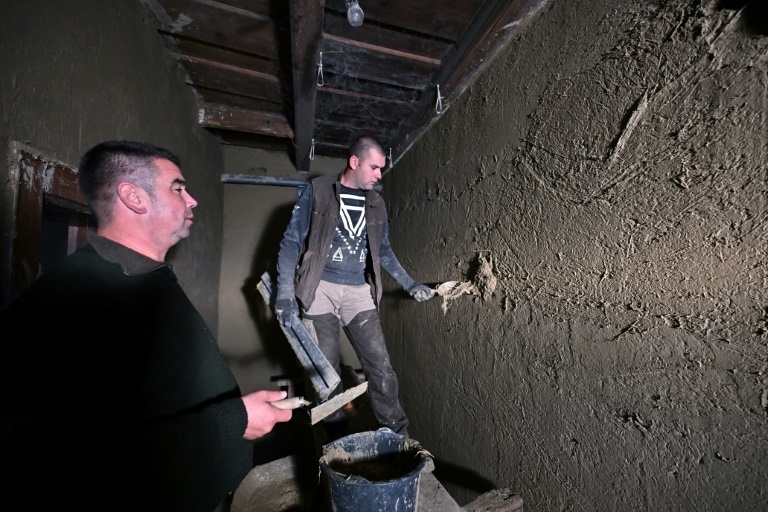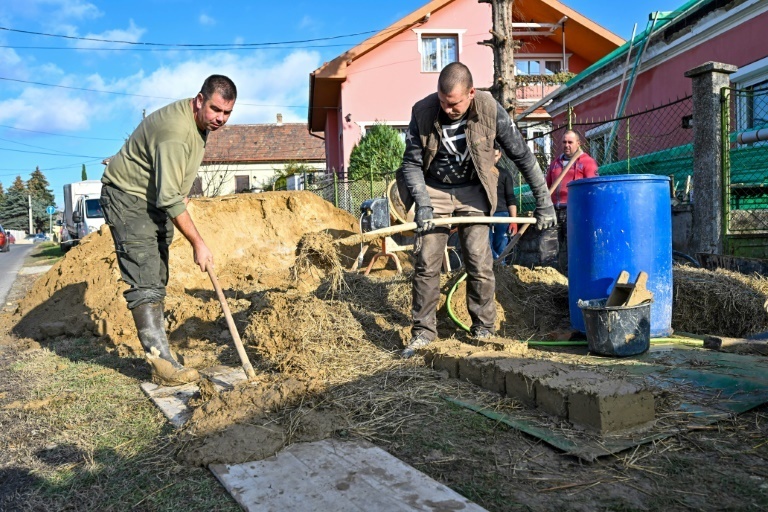They were long derided as old-fashioned symbols of grinding poverty, but mud and straw houses are making a comeback in Hungary as a low-cost, eco-friendly alternative to concrete.
Master builder Janos Gaspar, who renovates earth houses, is worked off his feet.
"I'm booked up for three years. Interest is sky-high," the 48-year-old -- who has built more than 200 clay houses -- told AFP.
Known as rammed earth construction, the practice dates to Neolithic times.

Locally accessible materials is the basis of what Gaspar's architect colleague Adam Bihari calls "natural architecture".
"Hungarians knew how to build houses from what they had to hand or under their feet," said the bespectacled Bihari as a clay brick wall was plastered with mud in the town of Acs in northwest Hungary.
"This wall was made 100 years ago, and should be around for another 100," said Bihari.
- 'Material of future' -
In contrast to concrete, which accounts for about eight percent of global CO2 emissions, "it eventually disintegrates naturally, leaving no artificial waste behind," he said.

"This type of soil is perfect, and it's found everywhere around Hungary," said Gaspar as a cement mixer churned the ingredients into a mulch.
"You can make one brick a minute, and around 20,000 will make a house," he told the group while kneading handfuls of the mixture into a wooden mould.
The centuries-old practice fell out of fashion during the country's four-decade-long communist era.
"Folk traditions were officially frowned upon and modern materials took over," said Bihari, 33.
Clay brick walls were often cemented over which caused rot as dampness got trapped, he added.

Bihari said it is hard to counter long-held associations with damp and poverty.
But interest in natural materials is increasing among developers and investors, according to the architect.
"It is the building material of the future," he said.
- 'Naturally smart' -
Bihari said clay's thermal properties make it ideal for Hungary's fluctuating climate of hot summers and cold winters.
One of the camp participants, Timea Kiss, who already owns a clay house but wants to learn how to renovate it, said her building is naturally warm in winter and cool in summer.

Earth homes also regulate their own humidity, said Bihari, which can help people with asthmatic problems. They are also fireproof and non-toxic.
"You hear about 'smart' houses and even smart bricks," said Bihari. "But for me that is nonsense... clay is naturally smart."
Rising energy costs is another push factor behind the growing popularity of earth houses.
Several of the trainees in Acs told AFP they can no longer afford to build or buy conventional houses.
"My wife and I are interested in cheaper solutions like this, it's a bonus that it's good for the environment," said truck driver Zsolt Cserepkei, 31.
pmu/jza/fg/bp
© Agence France-Presse
Your content is great. However, if any of the content contained herein violates any rights of yours, including those of copyright, please contact us immediately by e-mail at media[@]kissrpr.com.
Source: Story.KISSPR.com

